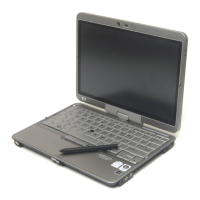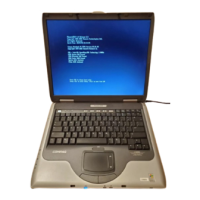Computer Setup 5–3
Security menu
✎
Some of the menu items listed in this section may not be supported by your computer.
Diagnostics menu
Select To do this
Setup BIOS Administrator Password Set up a BIOS administrator password.
User Management (requires a BIOS
administrator password)
■ Create a new BIOS user account.
■ View a list of ProtectTools users.
Password Policy (requires a BIOS
administrator password)
Revise password policy criteria.
HP SpareKey Enable/disable HP SpareKey (enabled by default).
Always Prompt for HP SpareKey Enrollment Enable/disable HP SpareKey enrollment (enabled by default).
Fingerprint Reset on Reboot (If Present) Enable/disable the fingerprint reader (select models only; disabled by default).
Allow reset of HP ProtectTools security keys Enable/disable reset of HP ProtectTools security keys
Change Password Enter, change, or delete a BIOS administrator password.
HP SpareKey Enrollment Enroll or reset HP SpareKey, which is a set of security questions and answers
used if you forget your password.
DriveLock Passwords ■ Enable/disable DriveLock on any computer hard drive (enabled by default).
■ Change a DriveLock user password or master password.
✎
DriveLock settings are accessible only when you enter Computer Setup
by turning on (not restarting) the computer.
Automatic DriveLock Enable/disable Automatic DriveLock support.
Disk Sanitizer Run Disk Sanitizer to destroy all existing data on the primary hard drive or the
drive in the upgrade bay.
Ä
If you run Disk Sanitizer, the data on the selected drive is destroyed
permanently.
System IDs Enter a user-defined computer asset tracking number and ownership tag.
Always Prompt for HP SpareKey Enrollment Enable/disable a prompt for HP SpareKey enrollment.
Select To do this
System Diagnostics menu ■ F1 System Information—Displays the following information:
❐ Identification information for the computer and the batteries in the system.
❐ Specification information for the processor, cache and memory size,
system ROM, video revision, and keyboard controller version.
■ F2 Start-up Test—Verifies the system components needed for starting
the computer.
■ F3 Run-In Test—Runs a comprehensive check on system memory.
■ F4 Hard Disk Test—Runs a comprehensive self-test on any hard drive in
the system.
